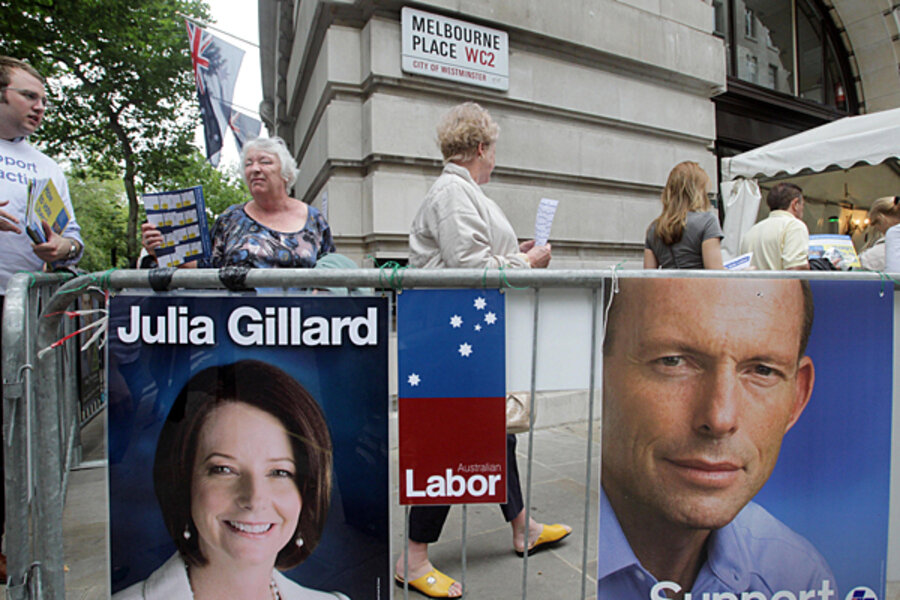Australian election is set to be closest in decades
Loading...
| Sydney
Six months ago, the Australian Labor Party was basking in popularity and Kevin Rudd’s government seemed headed for an easy election win. Now his successor, Julia Gillard, will count herself lucky to scrape back into power with a tiny majority in Saturday’s federal election.
Most recent opinion polls have Labor and the opposition coalition – the conservative Liberal Party and its rural-based ally, the National Party – neck and neck. Political analysts are forecasting the closest contest in decades, and say there is a real prospect of Australia’s first hung parliament since 1940.
Prime Minister Gillard agrees the election is “an absolute cliffhanger,” and she and the coalition leader, Tony Abbott, have spent the final days of the campaign blitzing the marginal constituencies in New South Wales and Queensland states that are expected to determine the outcome.
In the latter, the government is braced for a backlash from voters angry about the way Mr. Rudd, a Queenslander, was deposed in June by Ms. Gillard, amid Labor alarm about his plunging poll ratings.
What the candidates are running on
With both major parties seeking to capture the center ground, their policies are strikingly similar. Both plan to process offshore – via Indonesia – the asylum seekers who arrive in Australia by boat. Both have promised to return the budget to surplus by 2013. In foreign policy, both would continue to prioritize the alliance with the United States, and keep Australian troops in Afghanistan.
Gillard, the country’s first female prime minister, has pledged to build a high-speed national broadband network and to introduce a new tax on the mining industry. That was one of the issues that felled Rudd, as many Australians said the tax could eat into the economic benefits of mining.
The demand for Australia’s raw materials, particularly from China, helped it to weather the global financial crisis with barely a scratch – one of the few industrialized nations to do so.
Abbott, for his part, has promised a more generous paid parental-leave plan, and says he will cap the number of new immigrants at 170,000 a year. He will also raise $17.8 billion for infrastructure projects, such as roads and hospitals, by issuing government bonds.
The voters might not be impressed
John Warhurst, a political scientist at the Australian National University, predicts some middle-class Labor voters will switch to a third party, the Greens, out of “disappointment with the government’s lack of vision on issues such as climate change and asylum seekers.” The Greens are set to hold the balance of power in the Senate, or upper house.
David Burchell, a senior lecturer at the University of Western Sydney, says voters are anxious about economic issues such as interest rates. Most Australians have taken out loans to buy their own homes. “From the outside, we look like we’re incredibly stable economically,” he says. “But while people don’t think the world is tumbling down, they feel grumpy and dissatisfied.”
With so many similarities on policy, the election could also come down to personal profile, say some analysts: Gillard is a former union lawyer and avowed atheist who is unmarried and has no children. Abbott is a social conservative and staunch Roman Catholic with a wife and three daughters.
Voting in Australia is required by law. More than 14 million citizens are registered to vote. If neither party wins a majority in the House of Representatives (lower house), both will seek the support of the three independent MPs expected to be re-elected, plus one possible new Greens MP, in an effort to form a government.





